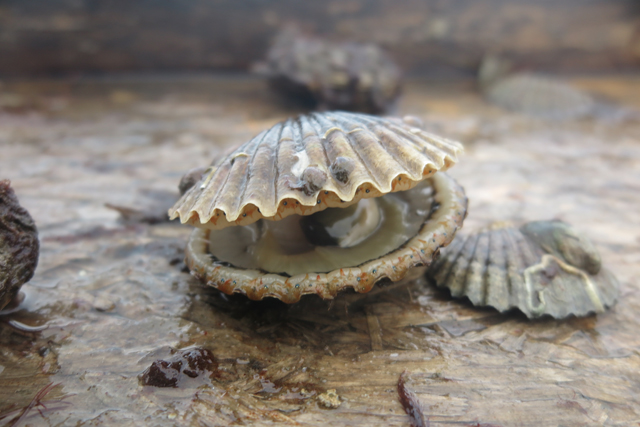DEC decides against extending the scalloping season


The last time Peconic Bay scallops were this plentiful was the winter of 2015, just before six weeks of hard weather put what should have been a five-month harvest on hold. Back then, the New York State Department of Environmental Conservation responded by extending the season for commercial scalloping in state waters by a month to make up for lost time, but this year, the season will end in March, right on schedule.
In a statement on Monday, the DEC announced it would not extend the 2018 season which began on Nov. 6, 2017. Spokesperson Erica Ringewalde said although ice had clogged creeks, bays and harbors for several weeks in January, they are now clear and baymen have the opportunity to harvest scallops until the season closes March 31.
The decision — made with the long-term health of the Peconic Bay scallop population foremost — affects the bottom line for baymen, seafood distributors, and restaurants. Baymen and fishmongers have been speculating about the possibility of an extension ever since the January freeze made it impossible for scallopers to get boats out.
One bayman who would have liked to see the season extended this year is Sawyer Clark of Shelter Island. “With the ice, it’s dangerous work. A lot of people went out early in the season this year, now there are only 35 or 40 real baymen still out there scalloping. We lost several weeks of revenues with the ice.”
At Braun Seafood Company in Cutchogue, Keith Reda said no one from the DEC contacted him about extending the scallop season, “If they had asked me, I’d have told them not to do it. Demand has lessened, retail and wholesale.”
Once the bays froze, the restaurants Mr. Reda supplies in New York and Long Island saw the prices rise and the supply dry up, disrupting the stream of local scallops that had been strong and steady throughout the fall. Now that scallops are available again, he has little demand.
According to Mr. Reda, scallop retail prices over the course of the season told the story; starting with the first weeks after the early November opening, when bay scallops went for as little as $15 a pound. “At that price, a restaurant was crazy not to choose the premium product, Peconic Bay scallops, over cheaper bay scallops from elsewhere.”
Gradually the price climbed through the fall, to a high of around $23 a pound before they became unavailable for part of January. Shucked scallops are now back down to about $18 or $19 a pound as baymen have found plenty of large ones still alive under that cold water.
Mr. Reda pointed out that the quality of the bay scallops late in the season is different than in November, since scallops have a very short lifespan and by spring will die of natural causes if they are not caught. As for the ones he’s seeing now, “They are very large and very old.”
The DEC spokesperson said the decision not to allow commercial scallop fishing in state waters to extend into April was based on the weather, not the economic climate, and not concerns about the upcoming spawn. “DEC’s decision is based on the number of days of ice-covered embayments,” Ms. Ringewalde said.
The DEC and local commercial fishermen are on the same page when it comes to the long-term viability of the Peconic Bay scallop. The collapse of the scallop population in the late 80s was a calamity that brought the DEC and the baymen together in agreement that scalloping season had to be changed to maximize the chances for scallops to spawn.
“We used to start in September,” recalled bayman John Kotula of Shelter Island in a 2015 interview. “But we were finding scallops with roe in October, and we all really wanted this industry to come back.”
The people who sell and distribute the local delicacy agree.
“I can only hope for a good season next year,” Mr. Reda said.
Photo: Blue-eyed scallop on the culling board. (Credit: Charity Robey)








